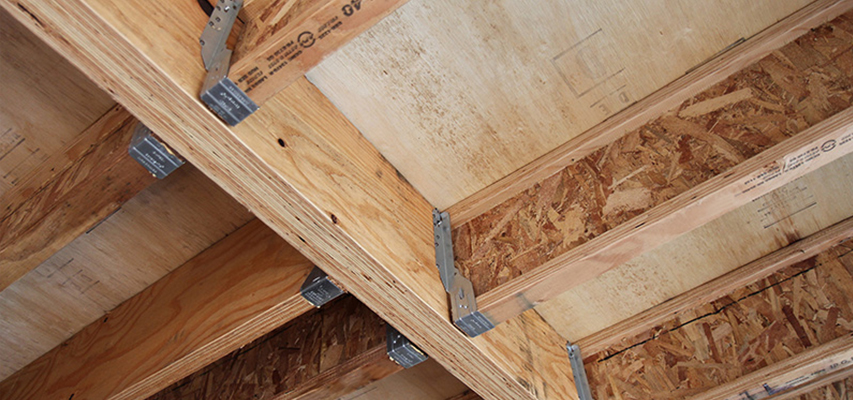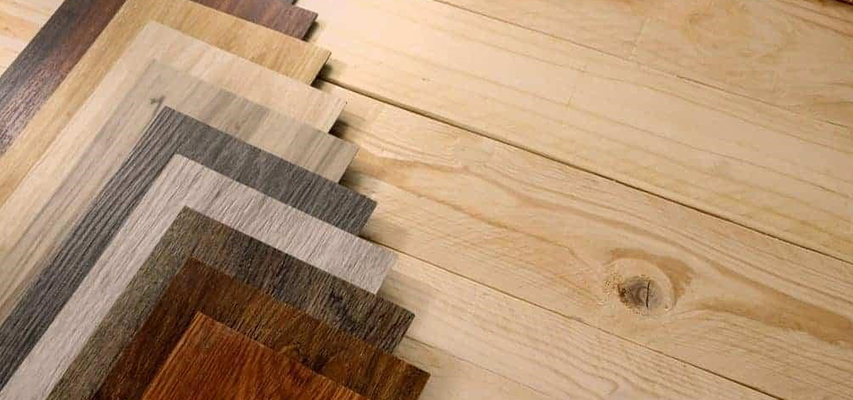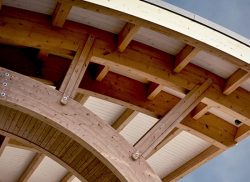
Engineered wood is relatively affordable and easily available, it is derived from, among others, by-products and remains of wood held together by a bonding agent or adhesive, as well as chemicals and intense heat.
In a recent survey, the Kenya Building Research Centre (KBRC) found that the high cost of building materials is largely to blame for the acute shortage of decent houses and the mushrooming of informal settlements.
The Government was consequently required to identify models for developing affordable housing, especially in urban centres, that incorporate innovative, environmentally safe, cost-effective and efficient approaches.
For the Government’s affordable housing agenda to succeed, KBRC says, builders need to use efficient construction technologies and methods, as well as affordable and sustainable building materials.
Plywood, the most recognisable type of engineered wood, is usually made of thin sheets glued together and then compressed and heated to bind them. Other examples of this product include conventional fibreboard, blockboard, particle boards, and medium-density fibreboards
Engineered wood is one such material. Relatively affordable and easily available, it is derived from, among others, by-products and remains of wood held together by a bonding agent or adhesive, as well as chemicals and intense heat.

This versatile composite material may also be referred to as manufactured board, mass timber, man-made wood or composite wood. It has been deployed in housing and construction projects for cladding, flooring, structural support, ceilings and wall portioning.
It is often used in place of timber, concrete or sometimes steel, for making floors, ceilings, doors, inbuilt cabinets, wall partitions, prefabricated housing units, and various types of furniture.
In fact, the term mass timber, one of the popular expressions that describe it, is often applied to define a collection of building materials that can replace concrete assemblages.
Plywood, the most recognisable type of engineered wood, is usually made of thin sheets glued together and then compressed and heated to bind them. Other examples of this product include conventional fibreboard, blockboard, particle boards, and medium-density fibreboards.
Medium density fibreboard (MDF) is an engineered wood-based sheet made by bonding together wood fibres with a synthetic resin adhesive. This product is emerging as a key option for solid timber owing to its low-cost nature. It is an alternative in a range of applications in the construction industry. 
The product, essentially, is a high-grade composite material made from recycled wood fibres and resin. It is dried and pressed to produce dense, stable sheets. For this reason, it does not warp or crack like conventional wood does. And since MDF is made from small particles, it does not have noticeable grain patterns and hence results in a smoother finish. It is also less expensive, which often is its key selling point.
It comes in handy, not just in construction, but also in making various components such as furniture, furnishings and cabinets. A key advantage of MDFs is that different types of waste matter can be used in its manufacture. Straw, coconut fronds, shells and husks, sugarcane bagasse, maize stover and cobs, coffee hull and husks, rice husks, oil palm fibres, cotton stalks, and euphorbia (especially when used as a sap binder alongside sugarcane bagasse) can be used in making, not just MDFs, but also a number of other types of engineered wood.
A study conducted by researchers Moses G. Nyang’au, Alex M. Muumbo and Charles M. M. Ondieki in 2019 on production of particle boards from sugarcane bagasse and euphorbia sap demonstrated that the two materials can be used to produce boards for day-to-day applications.
According to the 2016 report, Private forestry sector in Kenya: Status and potential, by the African Forest Forum, the Ministry of Environment, Water and Natural Resources in 2013 established that between 2012 and 2026, the demand for timber would increase by 43.2 percent, and poles by 58.2 percent. The report also predicted that with dwindling supplies, an acute shortage of the products would ensue. Kenya has a wood supply potential of roughly 31.4 million cubic metres, against a national demand of about 41.7 million cubic metres. This indicates a national deficit of 10.3 million cubic metres annually (inclusive of charcoal and firewood), according to the Ministry of Environment, Water and Natural Resources.
The ministry’s projection of net balances, in addition, showed an increasing deficit of wood in the future, rising by 26.5 percent from 10,328,130 cubic metres to 13,064,250 cubic metres by 2032.
It is for these reasons that, in areas where crops such as rice, coffee, maize, coconut and sugarcane are produced in large scale, efforts should be made to capitalise on the processing of ‘waste’ material to produce components for board making.
Then there are non-conventional types, such as boards made from waste products like rice husks and stalks, paper, plastics, and recycled plant materials. These engineered wood products are often touted as inexpensive, environmentally-friendly and sustainable for building and construction. Virtually all buildings, especially in urban settings, have an element of engineered wood, from ceilings and furniture to walls and partitions.


The case for engineered timber
A widely held notion is that comprehensive adoption of mass timber and its uses in place of concrete, conventional timber and steel in mid-rise structures, could in the next few decades turn buildings into carbon sinks. This could potentially help mitigate climate change.
Compared with carbon-intensive steel, which contributes 8 percent of global emissions, according to research by McKinsey & Co, and concrete (also 8 percent as per Chatham House), trees absorb carbon dioxide as they grow.
About half of the dry weight of wood is made up of carbon. Harvesting trees sustainably to make wood products means the carbon remains trapped in the wood throughout the life of the product.
Production of engineered wood emits less carbon dioxide and at a lower cost, compared with conventional building materials. This means the world can achieve substantial carbon points if more buildings use composite timber.

Deforestation is a global concern, so timber construction can be seen as exacerbating the problem. However, composite wood can be made from parts of fast-growing trees, leaving old forests alone.
In Kenya’s quest to build sufficient affordable houses for its growing population, engineered wood is emerging as an important raw material. Several wood companies specialise in producing this raw material.
For builders considering using eco-friendly wood, particle boards, for instance, are an affordable, environmentally-friendly option, especially for ceilings, shelves, furniture and cabinets.
Particle boards are cheaper, denser and more uniform than conventional wood, and can last longer if cared for properly. As a raw material, engineered wood may be more preferred than solid wood for several reasons. It is versatile and easily available in a range of thicknesses, allowing it to be used for different functions in construction.
Working on it is stress-free, since ordinary tools and equipment can be used. It can be cut, drilled, routed, joined, glued and fastened easily, compared with solid wood.
The material is touted as stronger than ordinary wood. It is durable, robust and strong, without the bulkiness that often comes with these qualities.
It is also consistent, a characteristic that is absent in ordinary wood, whose quality declines rapidly over time. The material also helps conserve the environment as its manufacturing involves using products that would otherwise have been discarded.
However, the key advantage of engineered wood is that, unlike solid-wood timber, it is much more cost-effective and conserves forests.
Accurate production cuts the cost of shipping and assembly at the building site. It also improves the speed and efficiency of construction, further reducing costs. If the components are prefabricated off-site, that creates more opportunities for small businesses and cottage industries.

Accurate production cuts the cost of shipping and assembly at the building site. It also improves speed and efficiency of construction, further reducing costs. If components are prefabricated off-site, that creates more opportunities for small businesses and cottage industries.
Using engineered wood also helps reduce the cost of heating and cooling a building as its insulation properties are said to be better than those of stones, concrete, steel and aluminum.
Moreover, mass timber is quieter in construction, involves a smaller work crew and is safer overall.
Furthermore, compared with handling stones and steel, engineered timber is easier on construction workers. Wood also provides a better environment for its occupants, as it is known to absorb sound without amplifying it, and can reduce noise levels.
Yet, even with all these advantages, engineered wood as an alternative building material is still a relatively new concept in Africa, compared with where it is the main source, such as Australia, Europe and the United States.
Timber houses: The South African case
In South Africa, for example, only a tiny percentage of buildings are made from wood, according to timberiq.co.za. Several reasons (or “myths”, as South African industry players call them) have been advanced for this: that most people believe wood is susceptible to fire; it rots; has limited structural strength; and is more expensive to build and maintain.
The response from the South African industry players is that, contrary to these perceptions, wood is durable and can last centuries, and today’s preservatives enhance its durability. They also point out the advantages, such as low energy use in production and processing, and its health, insulation and carbon-storage benefits.
But perceptions may be changing. The Pretoria-based Chimu Construction has been building timber houses since 2012, and is said to be thriving. The company has seen a rise in demand for wood houses in recent years, as city slickers looking to retire to areas in the Eastern Cape have realised that timber is a good and low-cost building material. They can sell their city brick-and-mortar homes for millions of rand, build new timber houses and have plenty of money left for other things.
There are savings in time, too. A two-bedroom timber house that Chimu built for a client recently was completed within a week. The work involved erecting the wood shell and fitting doors and windows, as well as installing panelling inside. The electrical and plumbing work was completed by a different contractor.
As with a brick-and-mortar house, the owner of a timber home can choose whatever design they fancy, as long as it is within their budget. But the South African contractor believes that building with timber saves the costs by at least 60 percent.

South Africa offers examples for Kenya
The downside
There are downsides to use of engineered wood, including that the adhesive used in its production may contain chemicals such as formaldehyde, which can be toxic.
Its manufacture and production also require a lot of energy, as the grinding, binding and compressing need immense heat. It also requires additional work tools and equipment.
Use of products such as plywood, particle boards and fibreboards is often restricted to indoor applications because they tend to soak up water, which damages them. Because they are less appealing in appearance, they may require additional external layers, such as veneer or lamination, raising the production costs.
60% – Savings made by building with timber as opposed to brick and mortar, according to Chimu construction
The main raw ingredients for manufacturing engineered wood are materials that would normally be discarded as waste. They include chips from normal logs, used in the manufacture of timber, leftovers from other materials, and scrapings and shavings from sawmilling industries.
But lack of information on these efficient, locally available, alternative building materials, KBRC says, is among the leading causes of their low use.
Government agencies and departments have the onus of driving more research and disseminating information that will spur development and adoption of these materials and technologies.
8% – Global emission of carbon-intensive steel and concrete, according to research by McKinsey & Co, and concrete
Prof Matthews Dida from Maseno University’s Department of Plant and Soil Science affirms that rice and wheat husks are great materials for making boards. The materials, he says, contain traces of silicon, which makes boards robust.
“Wheat husks contain cellulose, a polysaccharide that provides tensile strength to plant cell matrices, making them strong raw materials for producing such boards,” explains Prof Dida.
He regrets that the bulk of husks in rice-growing regions like Ahero and Mwea goes to waste, noting that farmers could benefit if manufacturers turned such byproducts into building materials.

